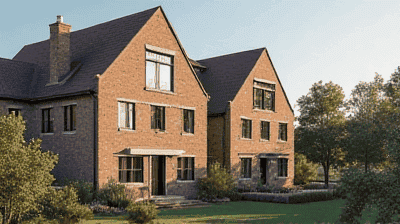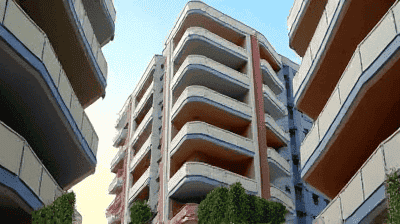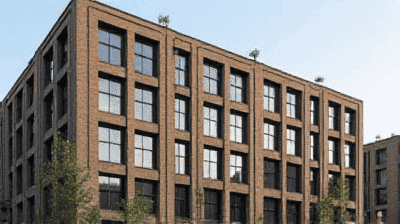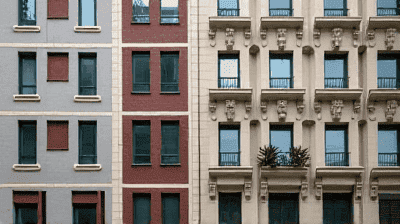
As global awareness of environmental issues intensifies, the construction and management of built environments are undergoing a transformative shift. One critical aspect of this change is the retrofitting of old buildings to enhance their energy efficiency. This process not only reduces operational costs but also minimizes environmental impact, conserves resources, and improves occupant comfort.
Retrofitting involves upgrading and improving existing buildings to meet contemporary performance standards for energy efficiency and sustainability. This can include a range of measures, from simple fixes like sealing windows to more complex updates such as improving heating, ventilation, and air conditioning (HVAC) systems or installing renewable energy sources.
Energy Savings: One of the primary advantages of retrofitting is the potential for significant energy savings. Improved insulation, upgraded HVAC systems, and energy-efficient lighting can lead to reduced energy consumption.
Cost Efficiency: Retrofitting older buildings often costs less than new construction, as many structures can be reused with thoughtful upgrades rather than demolished and rebuilt.
Environmental Impact: By making existing buildings more energy-efficient, retrofitting reduces the carbon footprint associated with energy production and consumption.
Preservation of Cultural Heritage: Retrofitting allows for the preservation of historical and culturally significant buildings while enhancing their functionality.
Increased Property Values: Energy-efficient buildings often see an increase in market value, making retrofitting a smart investment for property owners.

Buildings are responsible for a significant portion of global energy consumption and greenhouse gas emissions. Improving energy efficiency in both residential and commercial buildings is vital for addressing climate change and achieving sustainability goals.
The energy performance gap refers to the discrepancy between predicted and actual energy consumption in buildings. This gap often arises due to outdated building designs, inadequate insulation, and inefficient systems. Retrofitting plays a crucial role in closing this gap by upgrading elements that contribute to inefficiency.
In urban environments, where space is limited and populations are growing, energy-efficient retrofitting can significantly reduce overall energy demand. This leads to lower emissions and improved local air quality, contributing to better public health outcomes. Moreover, well-retrofitted buildings can serve as models of sustainability and resilience, inspiring further action in the community.
There are numerous strategies that property owners and managers can employ to retrofit old buildings for better energy efficiency. Here are the most cost-effective methods that can be implemented based on building type, age, and condition.
Before embarking on a retrofitting project, it is essential to perform a comprehensive energy audit. This assessment identifies areas of energy loss and inefficiency, providing a clear roadmap for improvements.
Identify Energy Consumption Patterns: An energy audit helps pinpoint how energy is used within the building and where savings can be realized.
Prioritize Upgrades: By understanding which systems are most inefficient, stakeholders can prioritize retrofitting efforts based on potential cost savings.
One of the most effective ways to improve a building's energy efficiency is by upgrading insulation. Many older buildings suffer from inadequate insulation, leading to significant heat loss in winter and heat gains in summer.
Attic Insulation: Adding or upgrading insulation in attics can prevent heat from escaping during colder months, helping to maintain a comfortable indoor temperature.
Wall Insulation: Retrofitting exterior walls with additional insulation can significantly improve thermal performance.
Foundation Insulation: Insulating crawl spaces and basements helps to reduce energy loss from below, creating a more energy-efficient envelope.
Cost-Effectiveness: Insulation upgrades are typically less expensive compared to other major renovations, yielding high returns on investment due to energy savings.
Windows and doors are common culprits of energy loss in older buildings. Retrofitting strategies can significantly enhance their performance:
Weatherstripping and Sealing: Simple measures like weatherstripping and caulking can help seal gaps around windows and doors to minimize drafts.
Installing Energy-Efficient Windows: If budget allows, consider replacing single-pane windows with double- or triple-glazed options. These windows reduce heat transfer, improving overall energy efficiency.
Window Film: For those who cannot replace windows, applying window film can help minimize heat gain from sunlight while maintaining natural light.
Heating, ventilation, and air conditioning systems are often outdated in older buildings, leading to inefficiencies. Upgrading these systems can yield substantial energy savings:
High-Efficiency Units: Replacing old HVAC units with high-efficiency models can reduce energy consumption significantly.
Smart Thermostats: Installing programmable or smart thermostats allows for better control of heating and cooling, optimizing energy use based on occupancy patterns.
Regular Maintenance: Ensuring existing HVAC systems are properly maintained can improve efficiency and prolong their lifespan.
Lighting is another significant contributor to energy consumption. Retrofitting lighting systems can lead to both energy and cost savings:
LED Lighting: Switching to LED lights can reduce energy consumption by up to 75% compared to traditional incandescent bulbs.
Occupancy Sensors: Installing occupancy sensors in less frequently used spaces (such as restrooms and storage areas) can ensure lights are only on when needed.
Daylighting Strategies: Maximizing natural light through architectural enhancements can reduce reliance on artificial lighting during daylight hours.
Incorporating renewable energy sources can significantly enhance the energy efficiency of retrofitted buildings:
Solar Panels: Installing solar photovoltaic panels can provide a substantial source of renewable energy, decreasing dependence on grid electricity.
Solar Water Heating: Investing in solar water heating systems can reduce energy costs associated with heating water for residential and commercial purposes.
Wind Turbines: In suitable locations, small-scale wind turbines can be used to generate additional renewable energy.
Retrofitting efforts should also extend to water efficiency:
Low-Flow Fixtures: Installing low-flow toilets, faucets, and showerheads can significantly reduce water consumption.
Rainwater Harvesting Systems: Collecting rainwater for non-potable uses, such as irrigation or toilet flushing, can further conserve water resources.
Smart Irrigation Systems: For buildings with outdoor spaces, smart irrigation systems can optimize water use based on weather conditions.
Integrating smart technologies can optimize energy use and enhance the performance of retrofitted buildings:
Building Automation Systems (BAS): A BAS can control HVAC, lighting, and other energy systems based on real-time occupancy and environmental conditions.
Energy Management Software: Utilizing software to monitor energy consumption can help identify patterns and opportunities for further savings.
Smart Meters: Installing smart meters provides real-time data on energy use, allowing occupants to adjust their habits accordingly.

Examining successful retrofitting projects can provide insight into effective strategies and inspire further efforts. Here are some significant examples:
The Empire State Building underwent a comprehensive retrofitting project that significantly improved its energy efficiency while preserving its iconic status.
Energy Efficiency Upgrades: The project included upgrading windows, improving insulation, and enhancing the HVAC system.
Energy Savings: These renovations have led to a reduction in energy consumption by approximately 40%, with an anticipated payback period of less than four years due to energy savings.
The Bullitt Center is often cited as one of the greenest commercial buildings in the world. This project exemplifies how retrofitting and innovative design can create a sustainable building.
Embodied Energy: The design focused on minimizing the building's embodied energy while providing a high-performance envelope.
Net Zero Energy: The Bullitt Center aims for net-zero energy consumption, using a combination of renewable energy, efficient systems, and innovative water management.
Although famous for its tilt, the Leaning Tower of Pisa underwent a retrofitting project aimed at preserving the structure while improving stability and safety.
Structural Enhancements: Engineers utilized techniques that not only stabilized the tower but improved its life span while maintaining its historical significance.
Energy Efficiency: The retrofitting included energy-efficient lighting and visitor facilities to enhance the overall experience while reducing energy use.
Despite the numerous benefits associated with retrofitting old buildings, there are challenges that can complicate the process:
High Upfront Costs: While retrofitting can be cost-effective in the long term, upfront costs can be a barrier for many property owners.
Older Infrastructure: Older buildings may have structural limitations that complicate energy-efficient upgrades.
Regulatory Constraints: Historic preservation guidelines may limit the types of modifications that can be made to certain buildings.
Tenant Disruption: Conducting retrofitting work in occupied buildings can lead to temporary disruptions for tenants.

Retrofitting old buildings represents a vital opportunity to improve energy efficiency, reduce environmental impact, and preserve cultural heritage. By implementing cost-effective strategies—ranging from enhanced insulation and upgraded HVAC systems to renewable energy solutions—property owners can make meaningful changes that benefit the environment and occupants alike.
As urban areas continue to evolve, the retrofitting of existing structures will play a crucial role in achieving sustainability goals and meeting the demands of modern living. The transition to more energy-efficient buildings is not merely a choice but an imperative for creating healthier, more sustainable urban environments.
Key stakeholders—including property owners, architects, engineers, and policymakers—must collaborate to create supportive frameworks and invest in retrofitting initiatives. By prioritizing energy efficiency and sustainability, we can transform how we manage our urban landscapes and leave a lasting impact for generations to come.